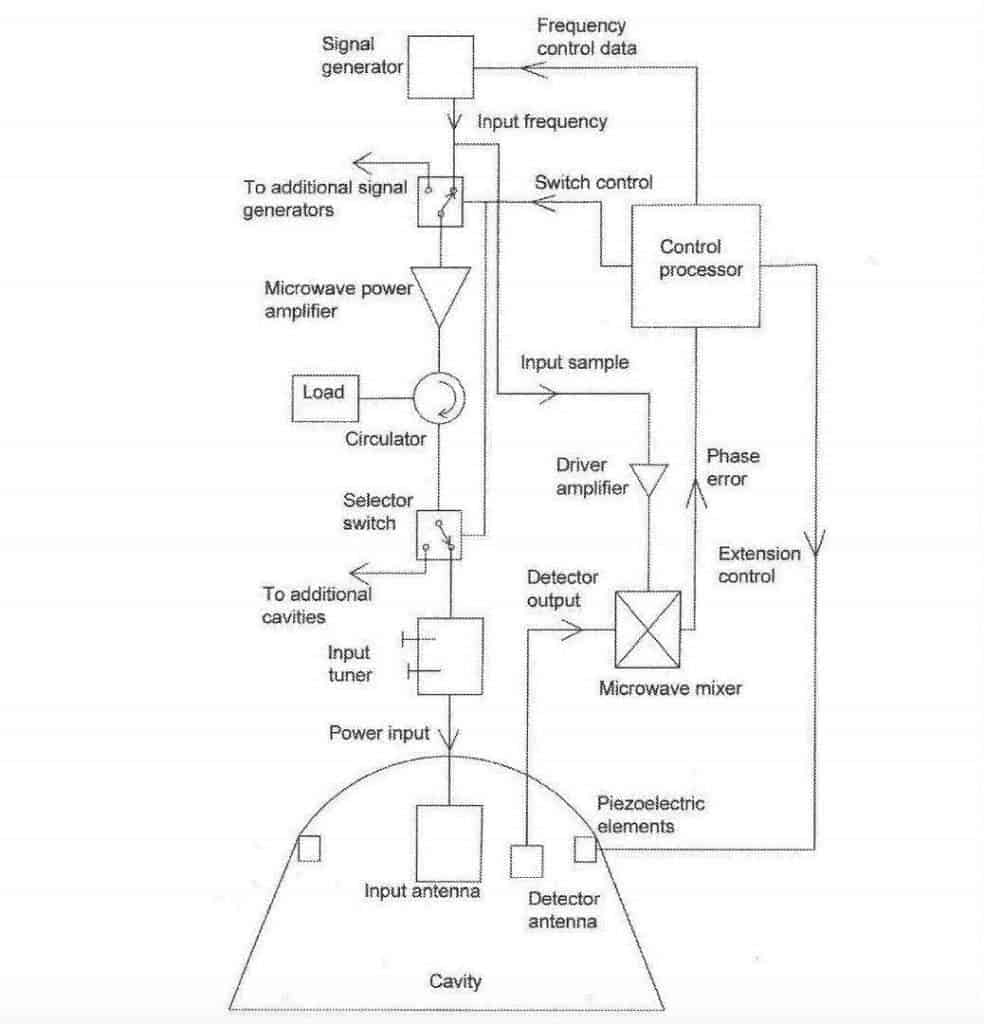The impossible drive has just been upgraded to version 2.0, and it’s expected to be several times more powerful than previous versions.

Image via Wikimedia.
It’s been a good year for seemingly physics-bending propulsion. After getting NASA’s seal of approval and successfully completing a 10 week-long trial, the engine’s future seems assured. Now the UK’s Intellectual Property Office has released the most advanced EM drive patient application to date — the work of the drive’s inventor Roger Shawyer.
“The patent process is a very significant process, it’s not like an academic peer review where everyone hides behind an anonymous review, it’s all out in the open,” Shawyer told the International Business Times.
Shawyer created the first EM drive — and a lot of controversy to go with it — in 1999. Since then, he’s been applying patents for each and every tweak he brings to the design. He says that millions of pounds rely on this procedure.
“This is a proper, professional way of establishing prior ownership done by professionals in the patent office, and in order to publish my patent application, they had to first carry out a thorough examination of the physics in order to establish that the invention does not contravene the laws of physics.”
As for the controversy part, it’s not hard to see the thorn here. The device seems to break one of the most fundamental laws of physics, Newton’s Third Law: when one body exerts a force upon a second, the second acts upon the first with equal force in the opposite direction — the “each action has an equal and opposite reaction” rule. It’s the law that prevents you from getting into a sail boat and then moving it by blowing on the sails.
Yet, the EM drive is basically just that — blowing on your own sail and moving forward. It relies on electromagnetic waves, creating thrust by bouncing photons back and forth inside a closed metal cone, causing the pointy end to accelerate forward. Which, according to the Third Law, shouldn’t be possible — the photons bouncing inside should push on both ends equally, canceling out the acceleration. In the absence of an exhaust compound, it shouldn’t be able to generate thrust. Back in 2014 when NASA first tested the drive and made it work, they reported that:
“Test results indicate that the RF resonant cavity thruster design, which is unique as an electric propulsion device, is producing a force that is not attributable to any classical electromagnetic phenomenon and therefore is potentially demonstrating an interaction with the quantum vacuum virtual plasma.”
Or, as Andrei put it:
“I believe that translates as, ‘We are not entirely sure why, but it works.‘ “
Since then, several other tests have confirmed that the drive works and NASA’s findings were sound. Even better, the tests revealed not only that the EM drive can produce thrust, but it can churn out a lot of it, having the potential to power an entire spacecraft. Using such an engine would also have the huge advantage of replacing the heavy and bulky fuel needed for conventional thrusters — something which has severely limited our mobility in the Solar System. As NASA’s Eagleworks Laboratories lead researcher Harold White said, an EM drive-powered Mars flight would take only 70 days — less than half of what it would take with current drives.
Shawyer’s latest patent has been made public. It describes the new design, which includes a single, flat, superconducting plate on one end, covered with a non-conducting plate with a distinctive shape on the other. Here’s a diagram of the control circuit.

He said this design minimizes the internal Doppler shift (the change in wavelength or frequency of a wave perceived by an observer moving relative to the source — the same process that makes a car sound differently when speeding towards than when it’s speeding away from you) and lowering production costs.
“This is pretty significant, because it enables you to easily manufacture these things, and we want to produce thousands of them,” he added.
“The patent makes the construction of a viable superconducting thruster easier, and it will produce a lot of thrust.”
You can access the full patent here.
The IBT reports that Shawyer is working with an unnamed UK aerospace company to develop the second generation EM drive. Shawyer says the new device will produce many orders of magnitude more thrust than what any of the teams so far have observed.
So right now, all we have to do is wait for the patents to go through then see how much juice this baby can churn out. Space cars, anyone?


